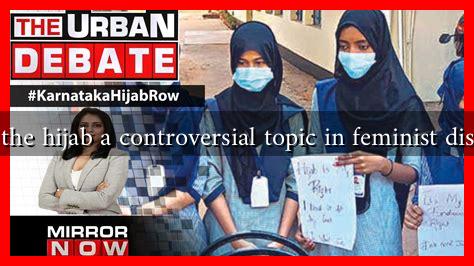-
Table of Contents
Why is the Hijab a Controversial Topic in Feminist Discourse?
The hijab, a traditional headscarf worn by many Muslim women, has become a focal point of debate within feminist discourse. While some view it as a symbol of oppression, others see it as an expression of identity and empowerment. This article explores the complexities surrounding the hijab, examining its implications in feminist discussions and the broader societal context.
The Hijab: A Symbol of Oppression or Empowerment?
At the heart of the controversy lies the dual perception of the hijab. For many feminists, particularly in Western contexts, the hijab is often seen as a tool of patriarchal control. Critics argue that it enforces a specific standard of modesty that restricts women’s freedom and autonomy. Conversely, many Muslim women assert that wearing the hijab is a personal choice that empowers them and allows them to reclaim their identity.
- Oppression Narrative: Critics argue that the hijab is a manifestation of systemic oppression, often enforced by societal or familial pressure.
- Empowerment Narrative: Many women claim that the hijab allows them to express their faith and individuality, challenging the notion that it is inherently oppressive.
Intersectionality in Feminism
To understand the hijab’s role in feminist discourse, it is essential to consider the concept of intersectionality. Coined by Kimberlé Crenshaw, intersectionality examines how various social identities—such as race, gender, and religion—intersect to create unique experiences of oppression and privilege.
For Muslim women, the hijab can represent a complex interplay of identity factors:
- Religious Identity: For many, the hijab is a religious obligation that fosters a sense of belonging within their faith community.
- Cultural Identity: The hijab can also signify cultural heritage, connecting women to their roots and traditions.
- Political Identity: In some contexts, wearing the hijab can be a political statement, asserting one’s right to religious expression in the face of discrimination.
Case Studies: Global Perspectives on the Hijab
The hijab’s significance varies widely across different cultures and countries, leading to diverse feminist responses. Here are a few notable examples:
- France: The 2004 law banning religious symbols in public schools sparked intense debate about secularism and women’s rights. Many feminists argued that the ban infringed on personal freedoms, while others supported it as a means to promote gender equality.
- Iran: Following the 1979 Islamic Revolution, the hijab became mandatory for women. This has led to significant feminist movements advocating for women’s rights and freedom of choice, highlighting the hijab as a symbol of both oppression and resistance.
- Turkey: The hijab has been a contentious issue in Turkey, where it was banned in public institutions for decades. Recent changes in policy have allowed women to wear the hijab, leading to debates about secularism and women’s autonomy.
Statistics and Public Opinion
Public opinion on the hijab varies significantly across different demographics. A 2017 Pew Research Center survey found that:
- In countries like Turkey, 63% of Muslims believe that wearing the hijab is a personal choice.
- In Western nations, many non-Muslims view the hijab as a symbol of oppression, with 55% of Americans expressing discomfort with the garment.
These statistics illustrate the divide in perceptions and highlight the need for nuanced discussions within feminist discourse.
Conclusion: Navigating the Controversy
The hijab remains a controversial topic in feminist discourse due to its multifaceted nature. It embodies a spectrum of meanings, from oppression to empowerment, shaped by cultural, religious, and political contexts. As feminists continue to engage with this topic, it is crucial to adopt an intersectional approach that respects individual choices and experiences. Understanding the hijab’s significance requires listening to the voices of those who wear it and recognizing the diverse narratives that exist within feminist discourse.
In summary, the hijab is not merely a piece of clothing; it is a complex symbol that challenges simplistic narratives of oppression and empowerment. By fostering open dialogue and embracing diverse perspectives, feminists can work towards a more inclusive understanding of women’s rights and identities.
For further reading on this topic, you can explore resources from the Pew Research Center and various feminist organizations that focus on intersectionality and women’s rights.

